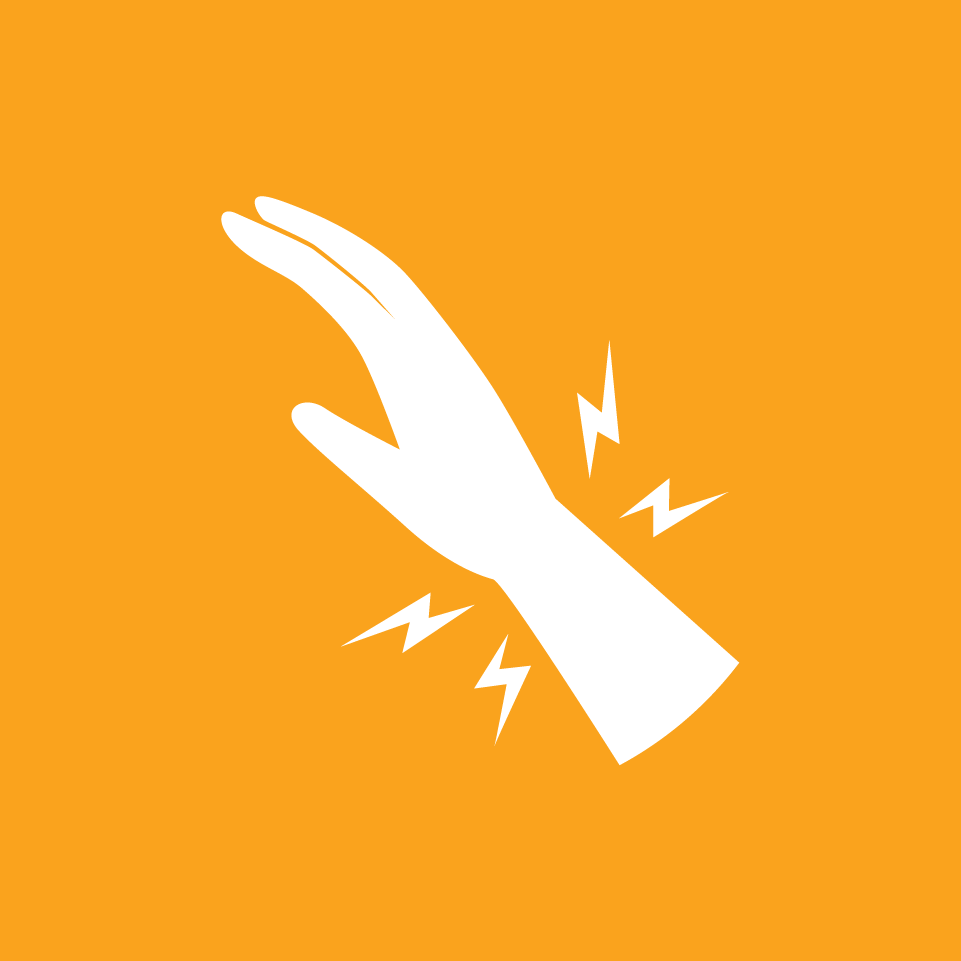Why does my arm hurt?
Arm pain can be a very mild experience or an extremely painful one. Arm pain can even be life-threatening as it can be associated with symptoms of a heart attack (myocardial infarction). In instances of a heart attack, other symptoms other than arm pain may be difficulty breathing, pressure on or around the chest area, and nausea. More often, arm pain is caused by an injury or condition affecting the muscles, joints, tendons, ligaments or bones in the arm. Arm injuries can happen from playing sports, performing manual labor duties, repetitive overuse, trauma, and improper exercise technique.
The symptoms that can accompany arm pain will depend on the cause. They may include:
Redness, stiffness, swelling, tingling, numbness, dull or sharp pain, muscle weakness, and/or pain with gripping / grasping.
Other instances of arm pain can be a result of any number of factors including skin injuries, muscle strain, nerve injuries, nerve damage, joint injuries or fractures or injury of the skin, nerves, bones, joints, blood vessels, and soft tissues of the arm.
Possible Diagnoses for arm/elbow pain:
Pinched Nerves
Nerves are most vulnerable for entrapment or compression at places in your body where they travel through narrow spaces but have little soft tissue to protect them. The pressure on the nerve in trouble may be the result of repetitive motions, from direct trauma that has caused swelling, from an anatomical variation, or from holding your body in one position for long periods, such as keeping elbows bent while sleeping or talking on a cell phone. If you’re experiencing numbness, tingling, pain, or weakness due to a nerve compression in your arm, your therapist will also assess your neck and all common areas of entrapment for that nerve tract. Therapy may include stretches, nerve glide exercises, splinting, and education on posture and ergonomics to best address contributing factors to your nerve compression. Conservative management of nerve compression syndromes will often alleviate the symptoms all together.
Carpal Tunnel Syndrome
This occurs when the Medial Nerve is squeezed as it travels through the wrist and can affect the wrist and part or all of where it supplies sensation including the palm surface of the thumb, index finger, long finger, and part of the ring finger.
Cubital Tunnel Syndrome
Although this occurs at a compression site at the inside of the elbow, most symptoms occur in the ring and small finger of the hand as the Ulnar Nerve or “funny bone” nerve goes through a tight spot at the elbow.
Nerve Damage in the Arm
This can occur from blunt trauma, laceration, compression, burns or progressive neurological conditions, causing muscles to not work properly and a loss of feeling or pain in the arm. There are 3 types of nerves:
Motor Nerves. These nerves regulate all the muscles under your conscious control, such as walking, talking, and holding objects. Damage to these nerves is typically associated with muscle weakness, painful cramps and uncontrollable muscle twitching.
Sensory Nerves. Because these nerves relay information about touch, temperature and pain, you may experience a variety of symptoms. These include numbness or tingling in your hands or feet. You may have trouble sensing pain or changes in temperature, walking, keeping your balance with your eyes closed or fastening buttons.
Autonomic Nerves. This group of nerves regulates activities that are not controlled consciously, such as breathing, heart and thyroid function, and digesting food. Symptoms may include excessive sweating, changes in blood pressure, the inability to tolerate heat and gastrointestinal symptoms.
You may experience a range of symptoms because many peripheral nerve injuries affect more than one type of nerve fibers.
Sprain or Strain in the Arm
Arm Sprains vs. Strains: Most commonly occurring at the elbow in the arm, by symptoms of any sprain or strain may include pain at rest or during motion, swelling, bruising, and decreased strength.
Treatment for elbow strains and sprains include increasing range of motion, promoting muscle healing, introducing specific resistive and strengthening exercises, and integrating functional tasks to promote independence and endurance for all daily or return-to-sport activities.
A sprain is a stretch or tear in a ligament. Ligaments are bands of fibrous tissue that connect bones to bones at joints. A strain is also a stretch to tear, but it happens in a muscle or a tendon. Tendons link muscles to the bones.
Tendonitis in Arm
Typically, you will notice elbow pain when using the hand and that is because the common flexor and extensor muscles of the wrist and hand originate at the elbow. The most common places for tendonitis in the arm are:
Tennis Elbow
This is the most common reason for elbow pain and is a result of the tendons that control wrist and finger straightening to become damaged, causing inflammation and pain. Not just due to tennis play, this often occurs in anyone who overuses the thumb and first two fingers or from repetitive and resistive gripping.
Golfer’s Elbow
Occurs at the inside of the elbow as a result of damage to the muscles that control wrist and finger motions, especially from improper throwing, poor technique with racquet sports, weight training, or forceful occupational movements from professions like carpentry.
Little League Elbow
Common among young, adolescent baseball players, this is a growth plate injury to the inner part of the elbow and a result of repetitive throwing. Individualized therapy programs are the most useful to these injuries as rest/rehab/and return to play have critical stages.













